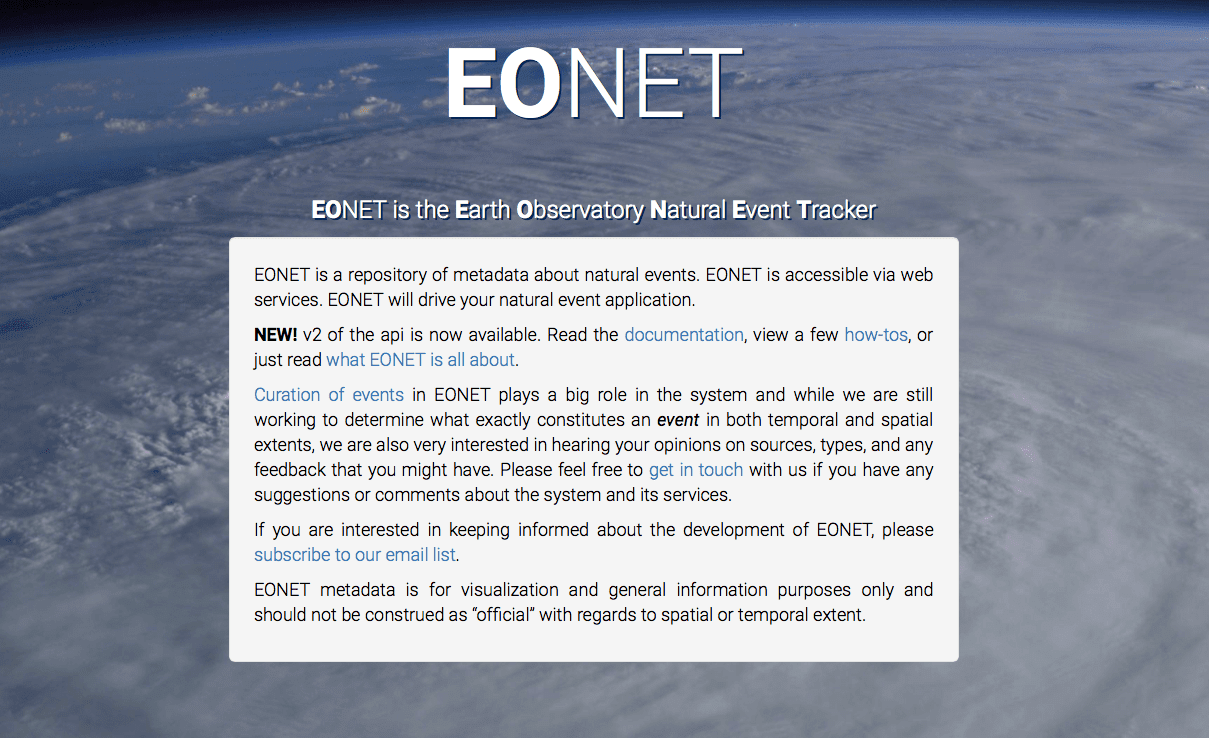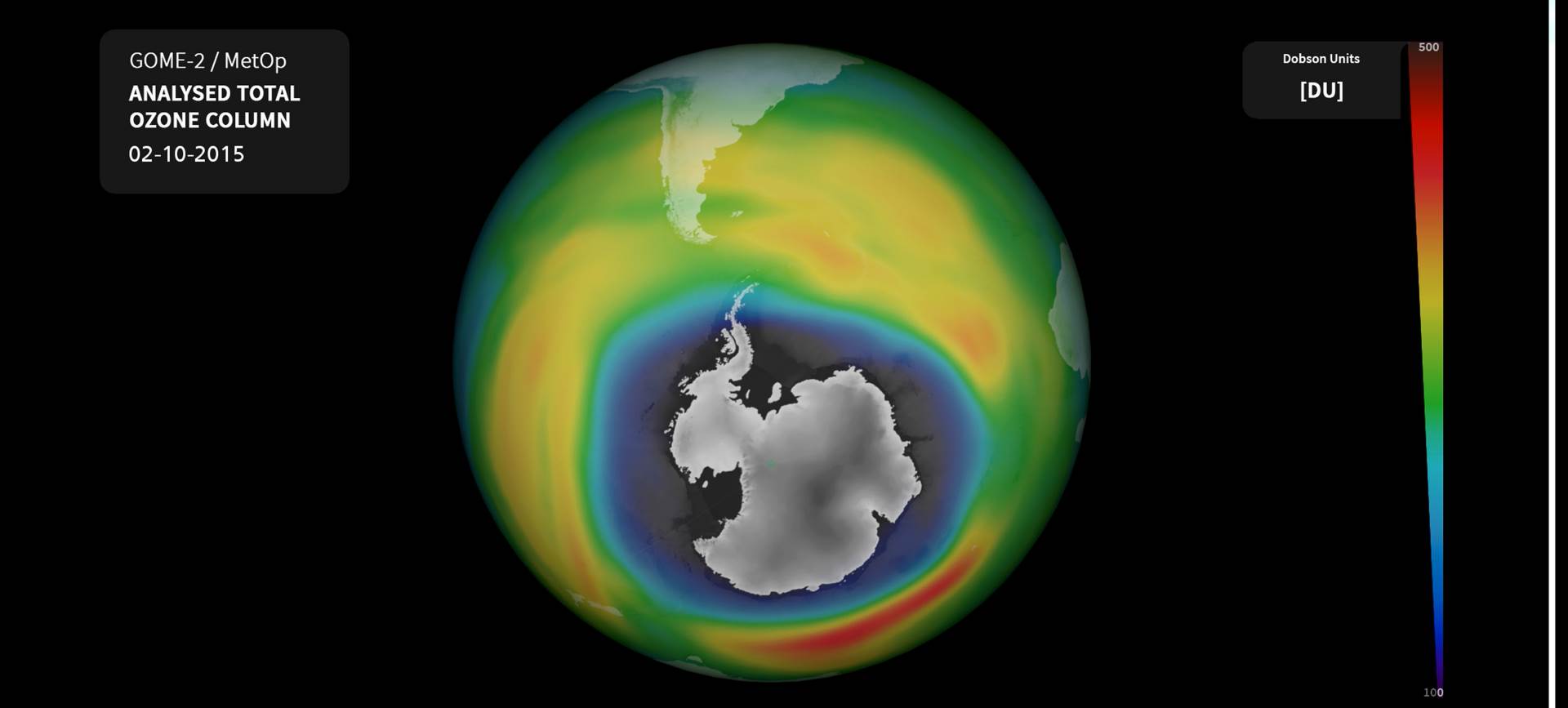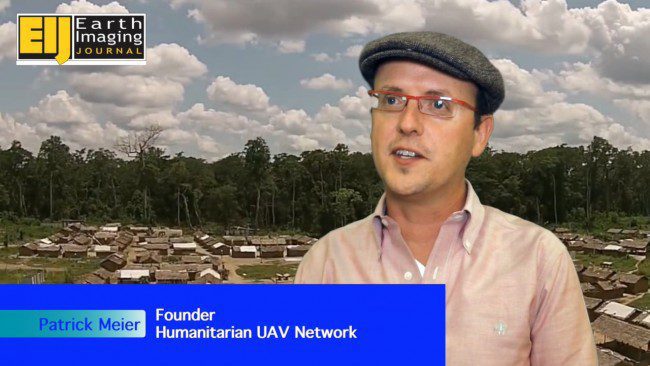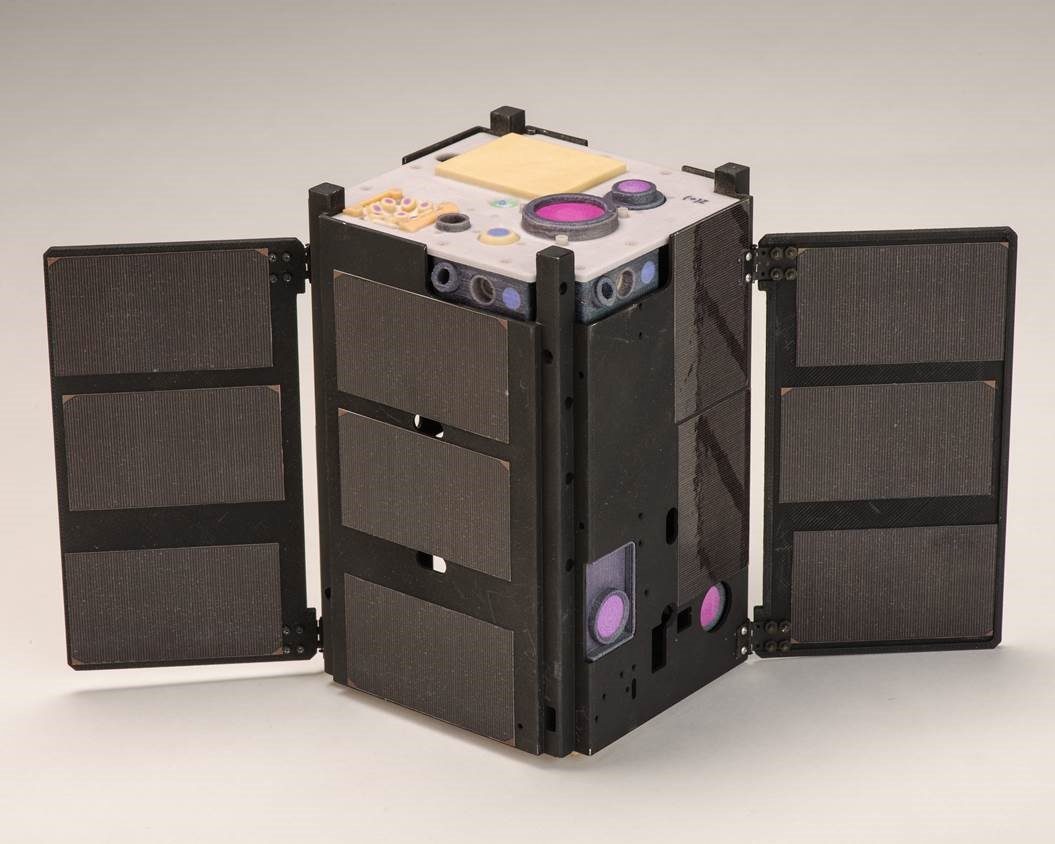NASA recently released the Earth Observatory Natural Event Tracker (EONET), an API that provides a curated collection of natural events as well as a way to link those events to image layers. EONET is expected to enable developers to build their own client applications on top of NASA data.











